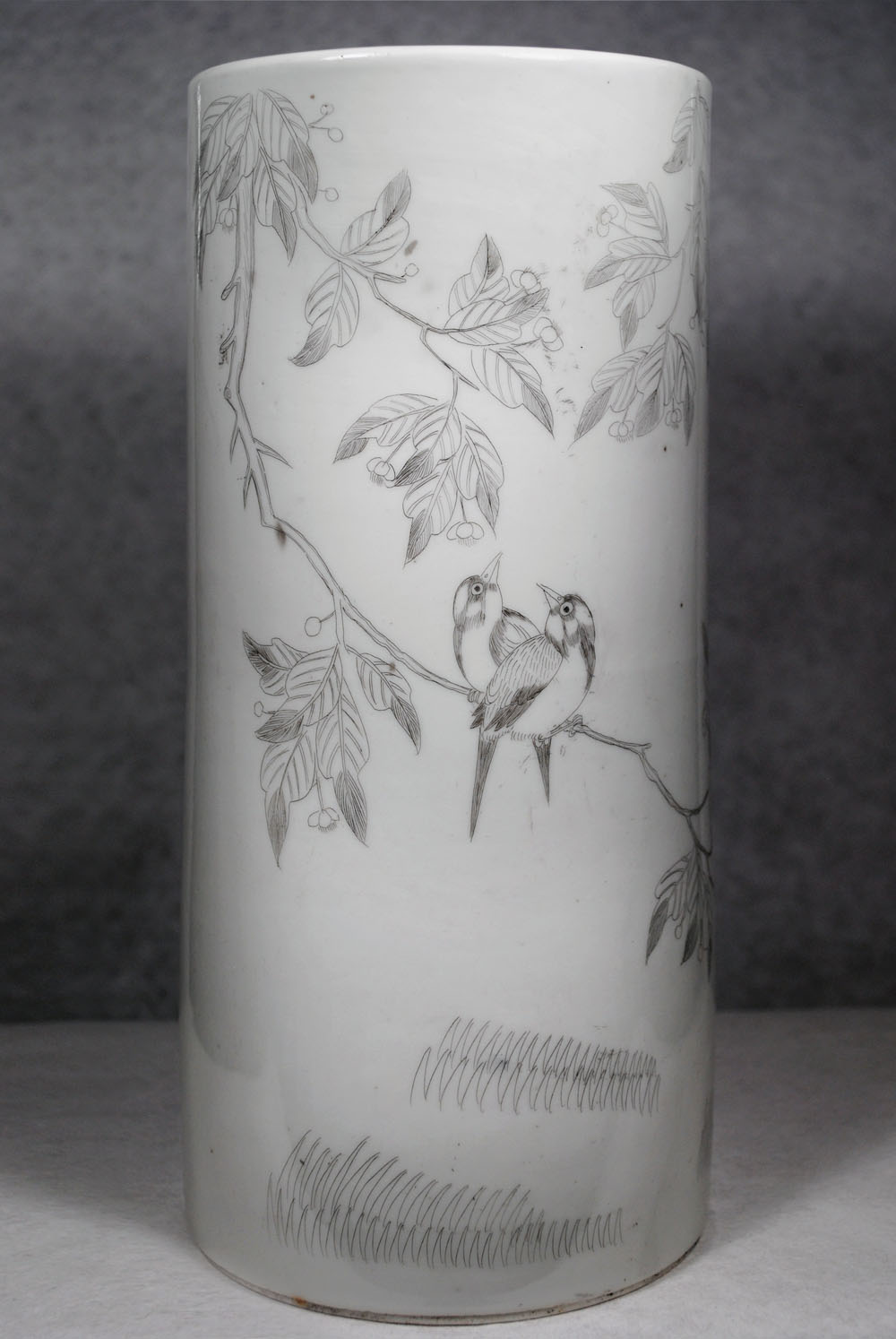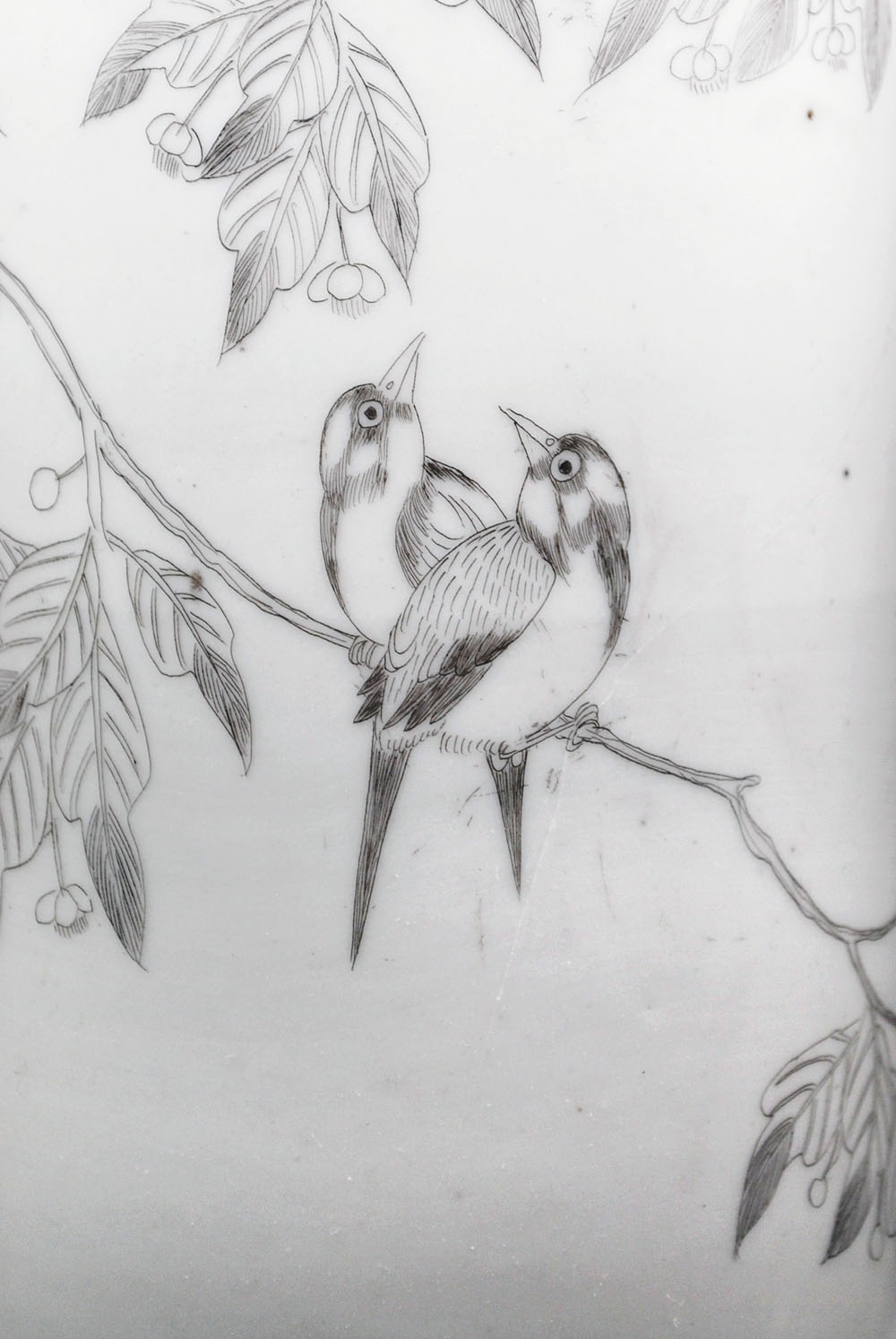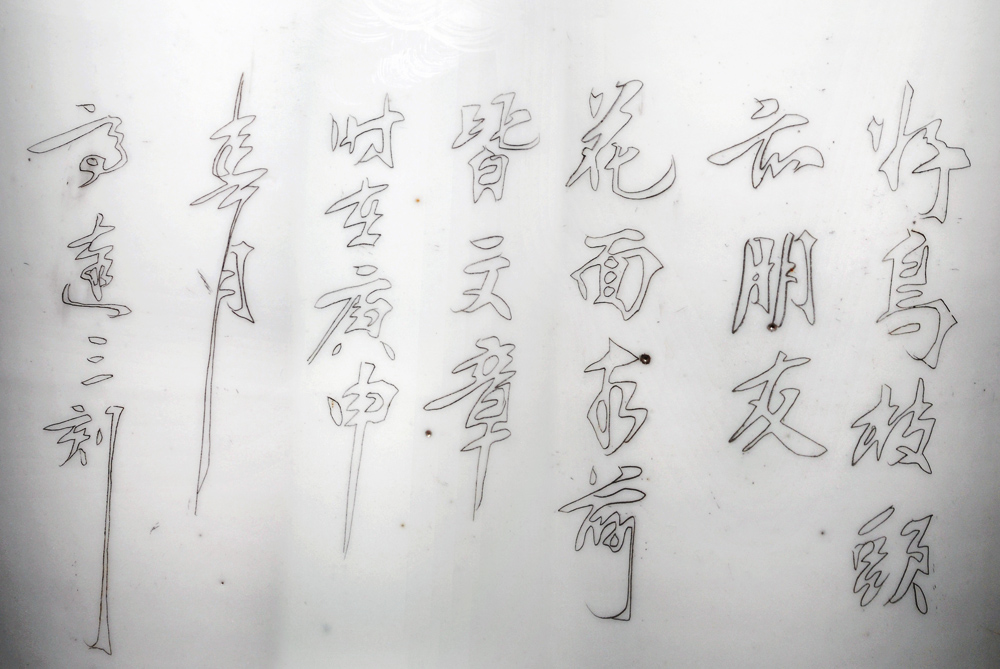
|
Subject:Re: Legitimate Kangxi?
Posted By: Bill H Thu, Sep 26, 2019
In my opinion, the figures are in a style similar to those seen on late Qing-early Republic export wares. Kangxi porcelain marks of the same style, without the double circles seen regularly during the period, were forged frequently from the Guangxu era onward. This vase has a telltale indentation that left a perfect ring under the white glaze at the inside edge of the foot. This clue and the perfect condition of the same glaze suggests to me an original mark might have been ground away in modern times to accommodate this new one under a re-glazed surface.
For what it implies regarding your vase and its date of manufacture, the catalog and book titled 'The Great Fortune" (2002, Georg Weishaupt), has pictures and descriptive text from pages 358-361 of a cylindrical teapot with a grisaille and sgraffito figural motif depicting a mythical story of the deity No Cha, combining Buddhist and Daoist themes. An inscription on the lid dates the pot to 1910.
In my own collection, I have a pair of 11 inch-tall cylinder vases (pix below) with sgraffito decoration of birds amidst flowering branches and a cyclical date of Gengshen (庚申) in its inscription, which in the context discussed here would equate to 1920 on modern calendars. The two vases actually have no black or other coloring in their incised motifs. However, I brought the details out using soot from a candle flame, which when wiped gently, leaves enough soot behind to brings out details. Since the two vases are otherwise perfect, I speculate that they might have been intended for an altar, where accumulating incense smoke would have slowly revealed the scenes. These two vases are the only ones of this type I've ever encountered, so I still can't say for sure if they were left like this intentionally.
Though I can't be certain, it may be that your vase has a motif of the three Daoist Star Gods making their rounds.
Best regards,
Bill H.





|
 Legitimate Kangxi?
Legitimate Kangxi?  ( China & Japan ) - Christian - Sep 25, 2019 (08:52 AM)
( China & Japan ) - Christian - Sep 25, 2019 (08:52 AM)  Re: Legitimate Kangxi? - deepsourses - Sep 26, 2019 (01:40 AM)
Re: Legitimate Kangxi? - deepsourses - Sep 26, 2019 (01:40 AM)  Re: Legitimate Kangxi?
Re: Legitimate Kangxi?  - Bill H - Sep 26, 2019 (09:57 PM)
- Bill H - Sep 26, 2019 (09:57 PM)